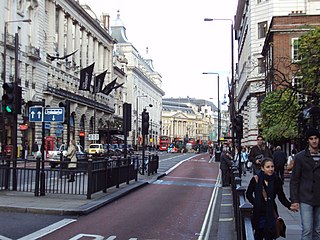
Piccadilly is a road in the City of Westminster, London, England, to the south of Mayfair, between Hyde Park Corner in the west and Piccadilly Circus in the east. It is part of the A4 road that connects central London to Hammersmith, Earl's Court, Heathrow Airport and the M4 motorway westward. St James's is to the south of the eastern section, while the western section is built up only on the northern side. Piccadilly is just under 1 mile (1.6 km) in length, and it is one of the widest and straightest streets in central London.
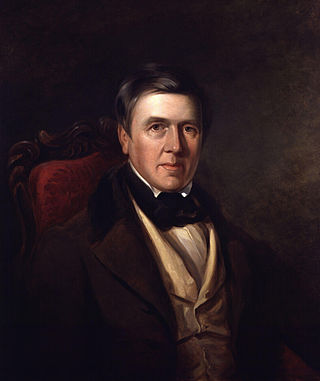
David Cox was an English landscape painter, one of the most important members of the Birmingham School of landscape artists and an early precursor of Impressionism.
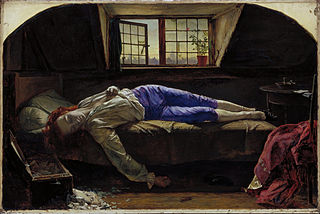
Henry Wallis was a British Pre-Raphaelite painter, writer and collector.

The Royal Watercolour Society is a British institution of painters working in watercolours. The Society is a centre of excellence for water-based media on paper, which allows for a diverse and interesting range of approaches to the medium of watercolour. Its members, or associates, use the postnominal initials RWS. They are elected by the membership, with typically half a dozen new associates joining the Society each year.
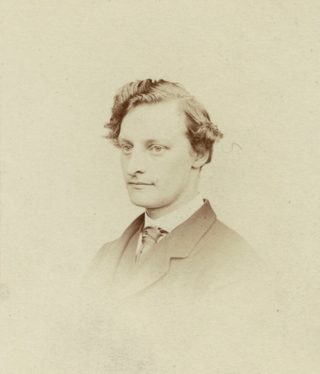
Edward Robert Hughes was a British painter, who primarily worked in watercolours, but also produced a number of oil paintings. He was influenced by his uncle and artist, Arthur Hughes who was associated with the Pre-Raphaelite Brotherhood, and worked closely with one of the Brotherhood's founders, William Holman Hunt.

William Leighton Leitch was a master Scottish landscape watercolour painter and illustrator. He was Drawing Master to Queen Victoria for 22 years. He was Vice President of the Royal Institute of Painters in Watercolours, on Pall Mall in London, for twenty years.

Henry Moore was an English marine and landscape painter.

Norman Wilkinson was a British artist who usually worked in oils, watercolours and drypoint. He was primarily a marine painter, but also an illustrator, poster artist, and wartime camoufleur. Wilkinson invented dazzle painting to protect merchant shipping during the First World War.
Mildred Anne Butler was an Irish artist, who worked in watercolour and oil of landscape, genre and animal subjects. Butler was born and spent most of her life in Kilmurry, Thomastown, County Kilkenny and was associated with the Newlyn School of painters.

William Collingwood Smith, was a British watercolourist.

Robert Walker Macbeth was a Scottish painter, etcher and watercolourist, specialising in pastoral landscape and the rustic genre. His father was the portrait painter Norman Macbeth and his niece Ann Macbeth. Two of his five brothers, James Macbeth (1847–1891) and Henry Macbeth, later Macbeth-Raeburn (1860–1947), were also artists.
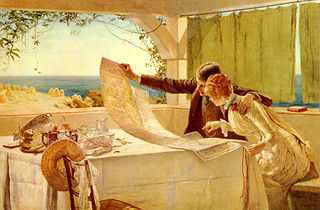
Edward Frederick Brewtnall was a British genre, landscape and figure painter and illustrator.
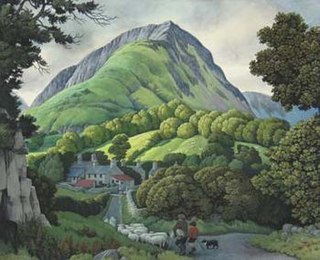
Norman Neasom RWS, RBSA was an English painter and art teacher. He grew up on Birchensale Farm in Brockhill Lane on the outskirts of Redditch, Worcestershire. On finishing his schooling at Redditch County High School, aged 16, he was given a scholarship at the Birmingham College of Art where, from 1931, he worked under Bernard Fleetwood-Walker, Harold Holden, Henry Sands, Michael Fletcher and William Colley.
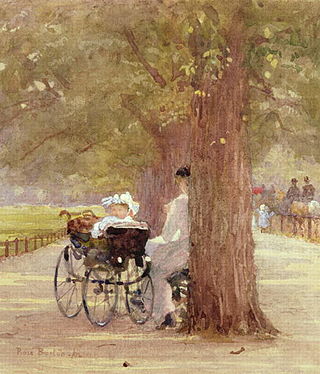
Rose Mary Barton was an Anglo-Irish artist; a watercolourist who painted landscape, street scenes, gardens, child portraiture and illustrations of the townscape of Britain and Ireland. Barton exhibited with a number of different painting societies, most notably the Watercolour Society of Ireland (WCSI), the Royal Academy (RA), the Royal Hibernian Academy (RHA), the Society of Women Artists and the Royal Watercolour Society (RWS). She became a full member of the RWS in 1911. Her paintings are in public collections of Irish painting in both Ireland and Britain, including the National Gallery of Ireland and Dublin City Gallery The Hugh Lane in Dublin, and the Ulster Museum in Belfast.

The Society of Women Artists (SWA) is a British art body dedicated to celebrating and promoting fine art created by women. It was founded as the Society of Female Artists (SFA) in 1855, offering women artists the opportunity to exhibit and sell their works. Annual exhibitions have been held in London since 1857, with some wartime interruptions.

Edward Duncan was a British watercolourist known for his depictions of coastal views and shipping. He was a member of the Royal Watercolour Society and received Royal patronage from Queen Victoria.

Sir Herbert Edwin Pelham Hughes-Stanton was a British watercolour and oil painter, predominantly of landscapes. He was elected an Associate of the Royal Academy in November 1913, elected a full Royal Academician in 1920 and knighted in 1923. He was an Officier l’ordre Leopold II and a member of the Royal Watercolour Society from 1909 or 1915 and its President from 1920 until 1936.

Arthur James Stark was an English painter and a member of the Norwich School of painters.

Robert Weir Allan (1851–1942) was a Scottish-born painter known mainly for his depiction of landscape and marine subjects. He was born in Glasgow into a family that encouraged and valued his natural artistic ability. He exhibited at the Glasgow Institute of the Fine Arts when aged 22, and two years later he had a painting selected for the Royal Academy, in London. In 1875–80 he attended the Académie Julian in Paris, and he was influenced by the French school of rustic naturalism and also by French Impressionism. Working plein-air, he developed a loose, painterly approach to landscape subjects. He was a prolific artist who travelled widely in Europe, India, Japan, the Middle East and America; however, he drew particular inspiration from the north-east coast of Scotland – a subject to which he returned throughout his life. He exhibited extensively in London, Glasgow and Edinburgh, and became vice-president of the Royal Society of Painters in Water Colours. He was equally at home with oil painting, and during his lifetime he had 84 paintings selected for exhibition at the Royal Academy. For the last 60 years of his life his home was in London, and he died there at the age of 90 in 1942.
Prince's Hall was a concert venue in Piccadilly, London.



















